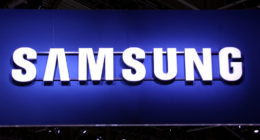In a push for connected mobility, German automaker BMW is looking to move past the usual touch interface in the car dash to introduce a new concept that uses gesture commands. Called the HoloActive Touch system, this innovative and revolutionary touch-sensitive display is installed in the vehicle to display info about music, navigation and more. This futuristic interior, part of BMW’s i Inside Future study, will be shown off at the CES (Consumer Electronics Show) 2017 in Las Vegas.
This interface instead of being integrated into the vehicle’s dash appears to be floating in the air and the response for these interactions can actually be felt by drivers, thanks to tactile feedback. This holographic display will be a part of BMW’s Connected cloud architecture, and the drivers will be able to access a wide variety of services without even needing to touch the display. The official blog post describes the same as under:
This innovative interface between the driver and vehicle acts like a virtual touchscreen; its free-floating display is operated using finger gestures and confirms the commands with what the driver perceives as tactile feedback.
Being one of the more innovative features of augmented reality, the technology will provide CES attendees with an impression of what the interiors of the connected and autonomous driving cars of the future will look like. BMW is making use of its existing head-up display tech and reflections to create the illusion of the existence of a full-colour display but it will be projected into nothingness. The company diverted from the usual projection of content on the windscreen in feature films to showing the same within the interiors.
For the first time, the functions can be controlled without any physical contact with materials, but the technology still enables the visible and tangible driver-vehicle interaction familiar from conventional touchscreens.
In addition, the driver of the new BMW 7 Series and new BMW 5 Series models, which will pack in this technology, will have the flexibility to configure the control pads. These projections are visible to the driver next to the steering wheel at the height of the center console, states the official blog post. There is also the presence of a camera that has been programmed to identify the user’s finger motions and detect when the person is interacting with the elevated floating projection.
The official statement further mentions that this technology is the next step for the evolution of the AirTouch system showcased at previous year’s CES conference. The driver is still required to use simple gestures with an open hand to activate control pads. Once activated, the user doesn’t need to touch the interface and still be able to access all the functions within the vehicle. This holographic technology sounds too impressive to be true but a closer look and interaction with the same will only help us better understand the gravity of this development.





